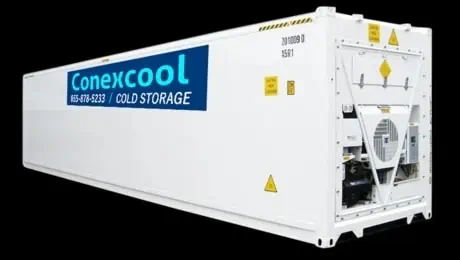In the vast expanse of global trade, shipping containers serve as the unsung heroes, silently ferrying goods across oceans and continents. These ubiquitous metal boxes come in a variety of shapes and sizes, each tailored to specific needs and cargo requirements.
From standard dry containers to specialized refrigerated units, understanding the diverse types of shipping containers is essential for optimizing logistics operations and ensuring the safe transport of goods.
Refrigerated Containers
At the forefront of specialized shipping containers are refrigerated units, also known as reefer containers, which play a crucial role in transporting temperature-sensitive cargo. These containers maintain precise temperature control, allowing perishable items such as fruits, vegetables, dairy products, and pharmaceuticals to remain fresh during transit.
Among the leading providers of refrigerated containers is Conexwest, renowned for its commitment to quality and reliability. Conex refrigerated cold storage emerged as the most utilized option last year. With a diverse fleet of refrigerated units equipped with state-of-the-art cooling systems, Conexwest ensures the integrity of perishable goods throughout the shipping process, from origin to destination.
Dry Containers
In addition to refrigerated containers, dry containers are the most common type used in shipping. These standard containers come in various sizes, including 20-foot and 40-foot options, and are designed to transport non-perishable goods such as clothing, electronics, machinery, and furniture. Containers for hire are also available.
Dry containers provide secure and weatherproof storage for a wide range of cargo, making them indispensable assets in the global supply chain.
Open-top Containers
Open-top containers offer a unique solution for oversized or bulky cargo that cannot be loaded through conventional doors. With removable roofs and flexible loading options, these containers accommodate items such as machinery, vehicles, and construction materials with ease.
Their versatility makes them ideal for industries such as construction, mining, and automotive, where specialized equipment requires efficient transport.
Flat rack Containers
Flat rack containers feature collapsible sides and end walls, allowing for easy loading and unloading of heavy or oversized cargo. Commonly used for transporting machinery, vehicles, and large equipment, flat rack containers provide a stable platform for securing bulky items during transit.
Their robust construction and flexibility make them well-suited for transporting goods to remote or challenging locations.
Tank Containers
Tank containers are specialized units designed for transporting liquid or gas cargo, such as chemicals, fuels, and food-grade products. These cylindrical containers feature reinforced walls and integrated valves for safe and efficient handling of hazardous or sensitive substances.
Tank containers adhere to strict safety standards and are indispensable in industries where liquid cargo transportation is prevalent, such as chemical manufacturing, petroleum refining, and food processing.
In conclusion, the world of shipping containers encompasses a diverse array of types, each catering to specific cargo requirements and logistical challenges. From refrigerated units ensuring the freshness of perishable goods to dry containers facilitating the transport of non-perishable items, these containers form the backbone of global trade and commerce.
As companies like Conexwest continue to innovate and expand their offerings, the future of shipping containers remains as dynamic and essential as ever, driving the seamless flow of goods across borders and oceans.

